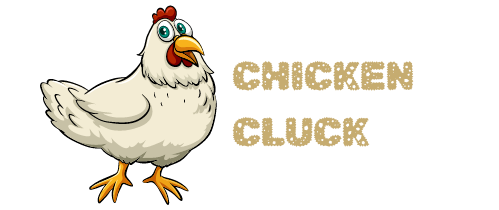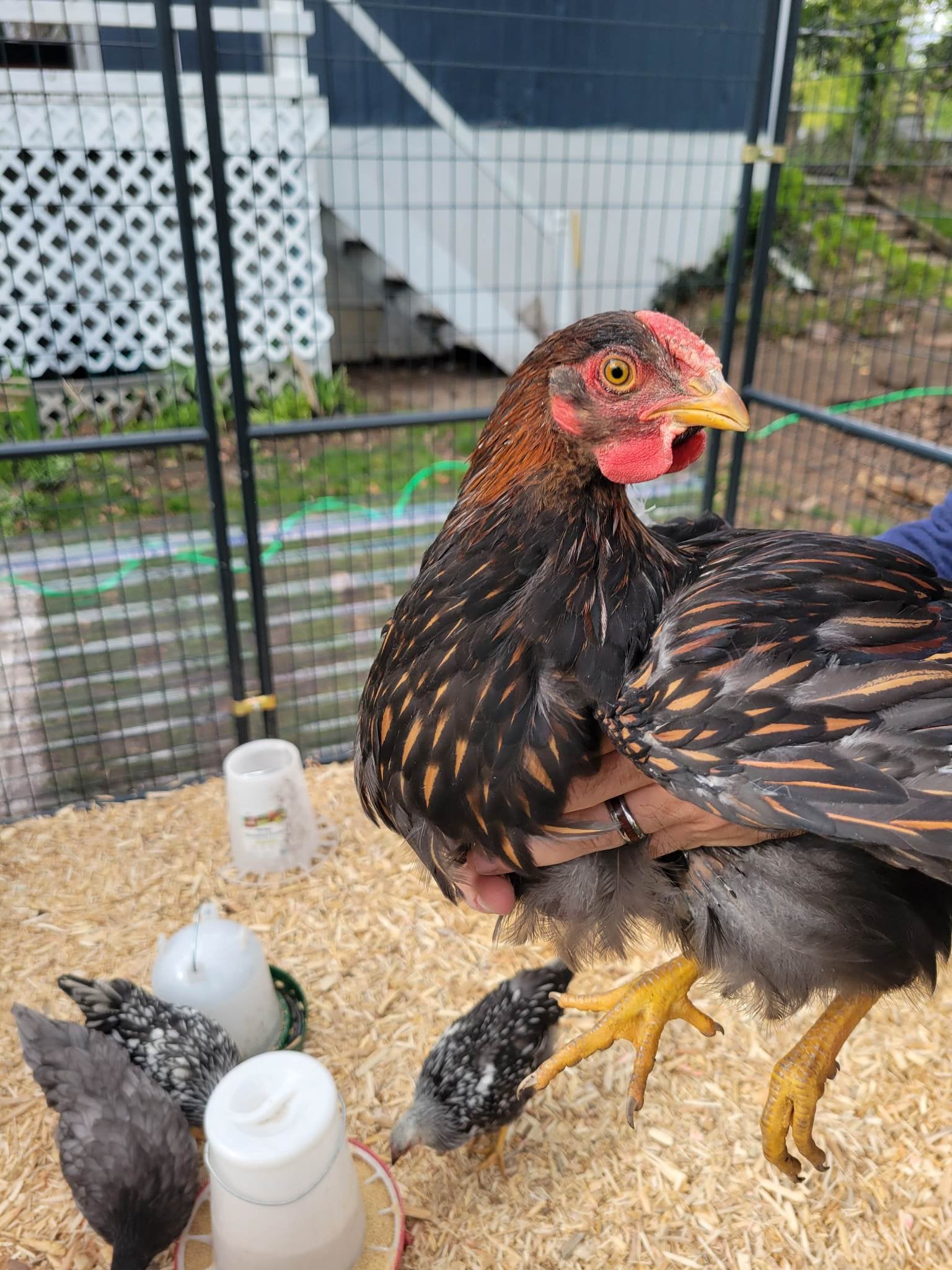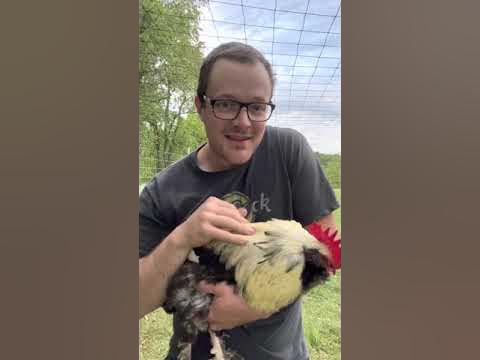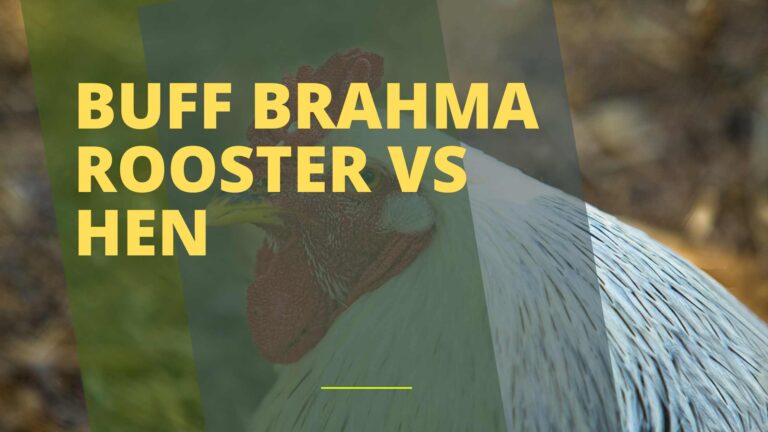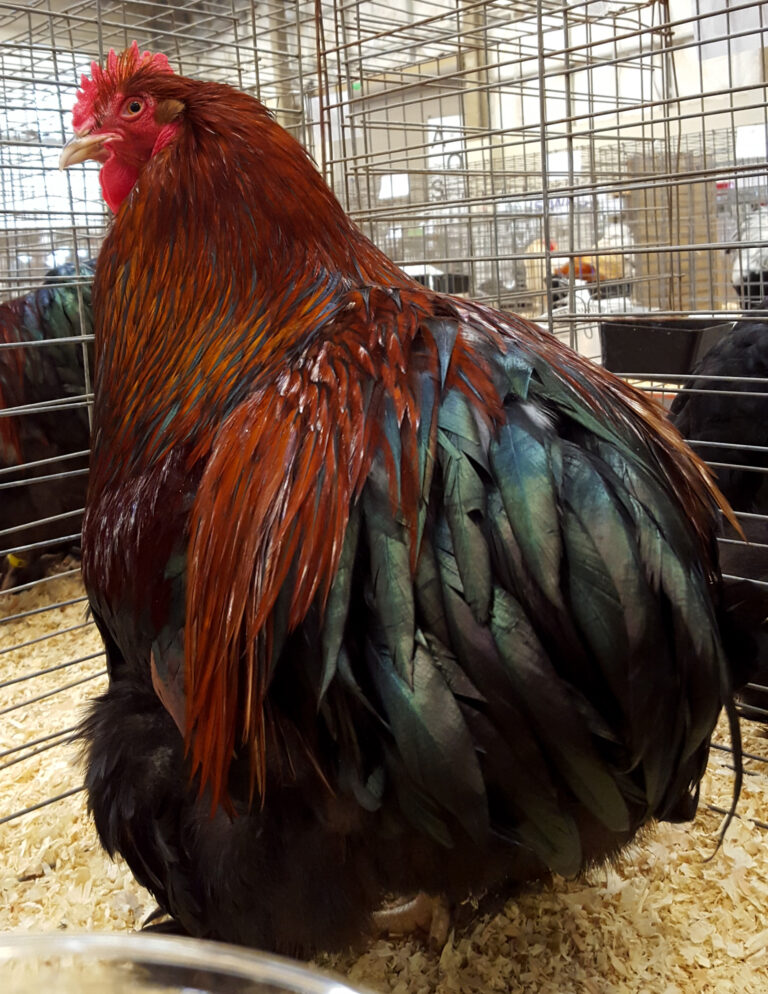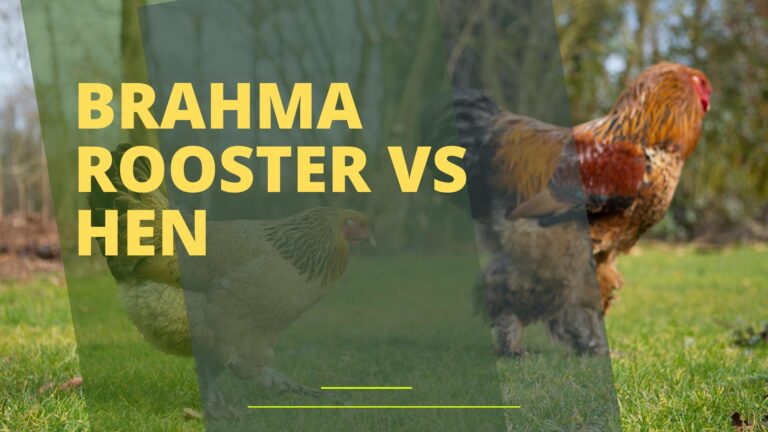Wyandotte roosters sport large, ornate tail feathers and pronounced combs, distinguishing them from hens. Hens feature a rounded, smooth plumage and smaller combs.
The Wyandotte breed, known for its striking appearance and friendly temperament, is a popular choice among poultry enthusiasts. Originating in the United States during the late 1800s, Wyandottes are admired for both their egg-laying abilities and their use as meat birds.
They come in a variety of colors, with the Silver Laced variety being widely recognized. Wyandotte hens are excellent layers, typically producing a good number of brown eggs each year. Both roosters and hens display a calm and docile nature, making them ideal for backyard flocks. Their distinctive rose-combed heads and laced feather patterns contribute to their visual appeal, ensuring they remain not only a practical choice for homesteaders but also a visually attractive one.
Distinctive Traits Of Wyandotte Chickens
The Wyandotte chicken is a breed admired for its striking appearance and friendly demeanor. Native to the United States, these birds display a variety of unique characteristics that set them apart from other breeds. Understanding these traits provides insight into their care needs and behavioral patterns.
Physical Attributes
The Wyandotte is well known for its curved, patterned feathers. They provide a lush, rounded look typical of the breed. Here’s a quick rundown:
- Bright, red combs and wattles that contrast with the feathers.
- Distinctive laced feather patterns, varying by color.
- A sturdy, broad body with a rounded breast.
- Yellow legs that are clean of feathers.
Roosters and hens differ in their looks:
| Rooster | Hen |
|---|---|
| Brighter and bolder feathers | Softer and subtler hues |
| Larger, more pronounced combs | Smaller, neater combs |
| Long, flowing tail feathers | Shorter, rounded tail coverage |
Behavioral Characteristics
Aside from their physical attributes, Wyandottes are known for their engaging behavior:
- Docile and friendly, ideal for families.
- Curious and active, showing a lively interest in their surroundings.
- Tend to be good layers, with consistent egg production.
- Social with flock mates, rarely causing discord.
Differences between roosters and hens extend to behavior too:
- Roosters are bold and protective, often watching for threats.
- Hens are more reserved and focus on nesting.
Their calm nature makes Wyandottes excellent for backyard flocks. Understanding their traits lets you optimize their care and enjoy their company to the fullest.

Credit: grubblyfarms.com
Rooster Glamour: Wyandotte Males In The Spotlight
The Wyandotte breed, known for its striking appearance, brings a mix of beauty and utility to poultry enthusiasts. Among this magnificent breed, the roosters stand out with their dazzling allure. Let’s shine a light on these handsome gents of the chicken world and discover what makes the Wyandotte males truly special.
Flamboyant Plumage
Wyandotte roosters boast an array of feathers that capture attention. Their plumage gleams with a metallic sheen, reflecting sunlight like polished armor. These birds showcase a pattern known as lacing, where each feather is edged with a contrasting color, creating a stunning visual effect. Below you’ll find a list of their most prominent feather areas:
- Hackles: These long, narrow feathers around the neck area often shimmer with iridescence.
- Saddle: The lower back feathers, called the saddle, cascade in glossy waves.
- Tail: Their tail feathers form a full, luxurious fan, completing their regal look.
Crowing Patterns And Vigilance
Wyandotte roosters are not only a feast for the eyes but also for the ears. Their crowing serves as a natural alarm clock, with each bird having a distinctive call. Beyond sunrise heralding, they crow throughout the day to assert dominance and communicate with the flock.
Vigilance is another hallmark of their behavior. Always on the lookout, the Wyandotte rooster watches for predators from a high vantage point. This sense of duty to protect the hens is tabled below:
| Behavior | Function |
|---|---|
| High-pitched crowing | Alerts the flock of danger |
| Perching high | Scans for predators |
| Feisty attitude | Defends against threats |
Wyandotte roosters command respect and admiration through their striking visuals and vital role in the flock. With their flamboyant feathers and strong protective instincts, they spark interest and bring an unmatched splendor to the barnyard.
Hen Highlights: The Females Of The Flock
In the dynamic world of poultry, Wyandotte hens hold their own with distinct charm. These fabulous females of the flock shine whether they’re pecking around the coop or nurturing their next brood. Let’s spotlight their exceptional abilities starting with egg-laying capacity to their instinct to mother.
Egg-laying Capacity
Wyandotte hens are prolific layers, known for their reliable egg production. They lay beautiful large brown eggs. Their consistent laying pattern is a highlight for any poultry enthusiast. Let’s look into numbers and patterns:
| Age at First Egg | Eggs per Week | Egg Color |
|---|---|---|
| 5-6 Months | 4-5 Eggs | Rich Brown |
A Wyandotte hen’s laying cycle can extend well beyond that of other breeds. With proper care, expect a steady supply of eggs.
Maternal Instincts
- Wyandotte hens display strong maternal instincts. They often go broody and excel at raising chicks.
- These mothers are attentive and protective. They ensure their chicks stay warm and safe.
- Nest building is another event where they invest significant care. The right nesting space means everything to them.
These instincts contribute to the Wyandotte species’ success in sustainability. They nurture the next generation with skill and affection.
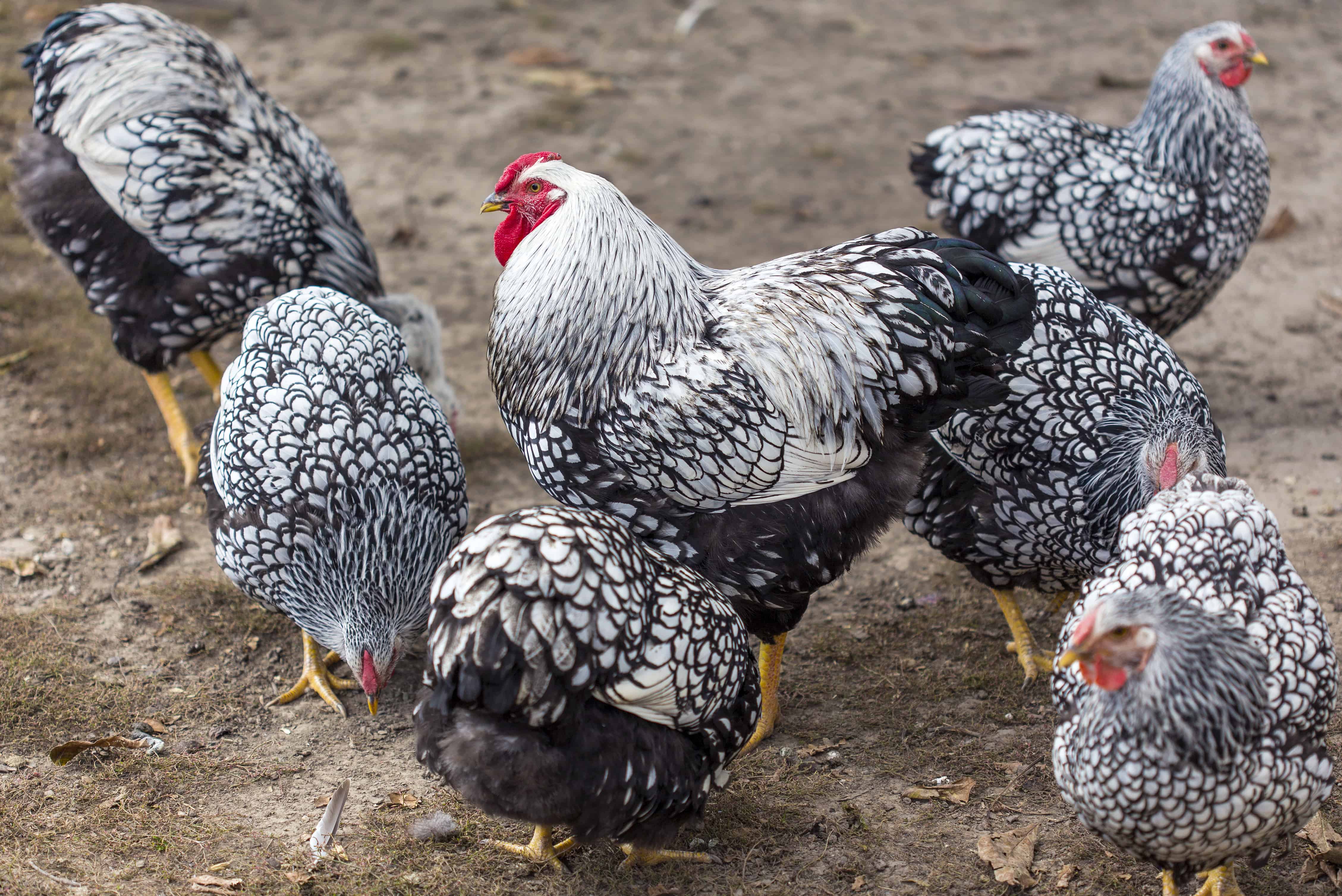
Credit: a-z-animals.com
Comparing Combs And Wattles
Discover the world of Wyandotte chickens by comparing their combs and wattles. These features are not just ornaments. They tell us a lot about the bird. A rooster and a hen have distinct differences here. Let’s dive in and spot these interesting differences!
Size And Shape Differences
Wyandotte roosters show off with larger and more prominent combs compared to hens. Their combs stand upright, and they’re quite bold. Hens have smaller and neater combs that fit their heads just right. Shape-wise, you’ll see roosters flaunting a classic rose comb, while hens might have a similar shape but it’s less pronounced.
Wattles follow the same rule of thumb. Roosters have longer and fuller wattles, adding to their charm. Hen wattles are shorter and more subdued. These features are not just for show. They help chickens cool down and attract mates.
Color And Texture Variations
When it comes to color, rooster combs are often a bright, vibrant red. This shows they’re healthy and ready to lead. Hen combs might be red too, but often softer in hue. Texture adds another layer to the tale, with roosters sporting more rugged and bumpy combs. Hens’ combs feel smoother as they’re less exposed to the rough and tumble of rooster life.
Wattles of Wyandotte roosters not only differ in size but also in shades. These bold features gleam with health when the rooster is in its prime. Hen wattles are more than just a size difference; they have a gentler feel and a matte finish, telling a story of subtlety and grace.
These details help bird enthusiasts distinguish between a Wyandotte rooster and hen with just a glance. Next time you visit a coop, take a closer look, and you’ll see these unique features telling their own story!
Feather Fashion: Analyzing Male And Female Plumage
Wyandotte chickens strut with style, showcasing a feather fashion that’s both eye-catching and unique. The dazzling display of their feathers is not just for looks; it hints at their roles and health. Let’s dive into the colorful world of Wyandotte plumage and see how roosters and hens differ in their feathery attire.
Color Schemes
Distinguishing a Wyandotte rooster from a hen starts with color patterns. Roosters often boast more vibrant colors, making them stand out. Hens wear a more subdued palette, blending with their surroundings, especially when nesting.
Table showing Color Schemes| Gender | Main Colors | Special Features |
|---|---|---|
| Rooster | Brights Reds and Greens | Bold contrasts and long tail feathers |
| Hen | Eggshell, Browns, and Tans | Subtle hues for camouflage |
Feather Density And Quality
Feathers aren’t just about color. Quality and density matter too. Wyandotte roosters flaunt dense, thick feathers that scream status and strength. Hens, on the other hand, have softer, but no less dense, plumage for keeping eggs and chicks warm.
Unordered list showing Feather Density and Quality factors- Rooster: Thick feathers for show and protection.
- Hen: Plush feathers for warmth and nesting.
Credit: www.backyardchickens.com
Crowing Vs Clucking: Vocal Distinctions
Understanding the sounds that wyandotte chickens make is key. Roosters and hens communicate differently. Their vocals are like their unique fingerprints. They tell us who they are.
Pitch And Volume
Roosters crow with a loud and sharp pitch. It’s their morning alarm. Their sound carries far. Hens cluck with a softer and steadier pitch. They speak more softly. They do this throughout the day.
- Roosters: High-pitched, loud, unmistakable.
- Hens: Lower-pitched, gentle, continuous.
Communication Purposes
Each bird has its own reasons to speak. It’s fascinating to see why. Roosters crow to claim territory and signal the flock. Hens cluck for different reasons.
| Rooster | Hen |
|---|---|
| Alarm calls | Calling chicks |
| Mating calls | Egg laying announcement |
| Establish dominance | Find food |
Roosters use crowing as a alert system for danger. Hens cluck to chat with their chicks or share food spots.
Behavioral Dynamics Within The Flock
Understanding the ‘Behavioral Dynamics Within the Flock’ is crucial for any poultry enthusiast. It reveals why and how Wyandotte roosters and hens interact uniquely. Let’s explore the structured world of these feathered beings.
Dominance And Pecking Order
The flock functions like a well-oiled machine with a clear hierarchy. This ranking system, known as the pecking order, maintains peace and organization. It determines access to food, mates, and nesting places.
Wyandotte roosters almost always sit atop this social staircase. They assert dominance through postures, vocalizations, and sometimes pecking. Hens follow the order, rarely challenging the rooster’s authority.
- Roosters lead: They protect, find food, and mate.
- Hens submit: They focus on laying eggs and raising chicks.
- Rare arguments happen, often settled quickly.
Social Interactions And Roles
In a Wyandotte flock, every bird plays a role. These roles depend on their position in the pecking order. Roosters lead, while hens have distinct roles, from foraging to nurturing.
| Rooster | Hens |
|---|---|
| Guard: Alerts and defends | Forager: Searches for food |
| Mate: Ensures offspring | Mother: Cares for chicks |
| Leader: Guides the flock | Peacemaker: Eases tensions |
Roosters display vigilance, keeping the flock safe. Hens often engage in communal activities, like dust bathing or feeding. They also communicate dangers and locations of good food to each other.
Different sounds mean different messages. A low cluck may indicate contentment, while a loud squawk could signal distress.
Physical Growth And Development Comparisons
Exploring the differences between Wyandotte roosters and hens unveils unique growth patterns. It’s fascinating to track how these birds change from fluffy chicks into full-grown adults. Understanding physical growth helps in better caring for these birds.
Growth Rates
Wyandotte chickens develop at distinctive rates depending on their gender. Roosters typically grow faster than hens. This rapid growth becomes noticeable after the first few weeks.
- By week 4: Rooster chicks are taller, with evident comb development.
- Hens trail slightly, with slower growth and smaller combs.
Body Size And Weight
As Wyandottes mature, size, and weight differences become obvious. Adult roosters outsize hens with more pronounced muscle and a heavier build. Let’s compare:
| Age | Rooster Average Weight | Hen Average Weight |
|---|---|---|
| 6 months | 6-7 lbs | 5-6 lbs |
| 1 year | 8-9 lbs | 6-7 lbs |
Roosters continue to grow heavier and larger up to 10-12 pounds. Hens, although petite, reach a healthy 7-8 pounds when fully grown.
Breeding And Reproductive Habits
The Wyandotte is a beloved breed, cherished for its beautiful plumage and friendly disposition. Understanding the breeding and reproductive habits of Wyandotte chickens ensures a thriving flock. Let’s delve into the fascinating behaviors and routines that distinguish hens from roosters during the breeding season.
Courtship Behaviors
Wyandotte roosters are well-known for their impressive courtship displays. They perform a dance known as “tidbitting” to attract hens. This ritual involves making a particular clucking sound and picking up and dropping food to get a hen’s attention. Roosters also spread their tail feathers, puff out their chests, and prance with high-stepped gait to showcase their strength and vitality.
Hens respond to this display by either ignoring the rooster, indicating a lack of interest, or by crouching down, signalling they are receptive. The rooster’s colorful appearance and vigorous dance are signs of health, which is important for hens when selecting a mate.
Nesting Routines
Wyandotte hens take nesting very seriously. They prefer quiet, secluded spots to lay their eggs. A proper nesting box is crucial, usually filled with straw or wood shavings, to keep the eggs safe.
- A hen will typically lay eggs every day to every other day.
- They often become broody, meaning they will sit on their eggs to incubate them.
- During this period, hens may pluck their own breast feathers.
- This behavior creates a bare spot for optimal warmth transfer to the eggs.
Wyandotte hens display strong maternal instincts. They are attentive mothers who protect and teach their chicks once hatched. Roosters play no part in the incubation process, but they may act as protectors for the flock.
Raising Wyandotte Roosters And Hens
Raising Wyandotte roosters and hens offers both charm and practicality to your farm. Known for their beautiful plumage and friendly nature, Wyandottes make excellent additions to backyard flocks. They are hardy birds, able to withstand various climates. Before diving into the specifics, let’s consider what it takes to raise these wonderful birds.
Housing NeedsHousing Needs
Wyandottes require sturdy, well-ventilated coops. They need space to roam and perches to sleep. Your coop must protect them from predators and extreme weather. Set up nesting boxes for hens to lay eggs comfortably. Ensure each hen has its own box.
Housing Table| Wyandotte Housing Essentials | |
|---|---|
| Space per bird: | 4 square feet inside coop, 10 square feet in run |
| Nesting Boxes: | One per 4-5 hens |
| Perches: | Minimum 8 inches per bird |
Diet And Nutrition
Balanced feed keeps your Wyandottes healthy. Offer chicks starter feed and adults layer pellets. Fresh water should always be available. Treats like fruits and vegetables can be given sparingly.
Diet List- Chicks: High-protein starter feed
- Layers: Calcium-rich layer pellets
- Treats: Leafy greens, apples, and carrots
Healthcare And Maintenance
Regular check-ups are crucial for maintaining flock health. Vaccinate against common diseases. Watch for parasites like mites and lice. Keep coops clean to prevent infections.
Healthcare Checklist- Monthly coop cleaning
- Bi-annual health checks
- Regular deworming
Conclusion
Distinguishing between Wyandotte roosters and hens is crucial for flock management and breeding. These birds showcase distinct features that make identification straightforward. Whether you seek ornamental beauty or robust egg layers, knowing the differences enhances your poultry experience. Embrace the diversity in your coop and enjoy the unique attributes each gender brings to the yard.
